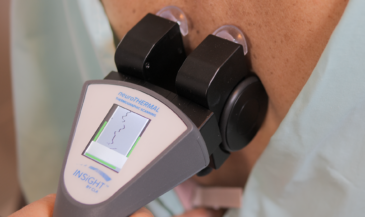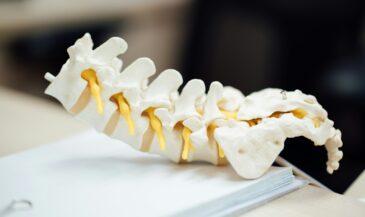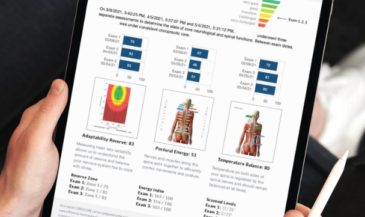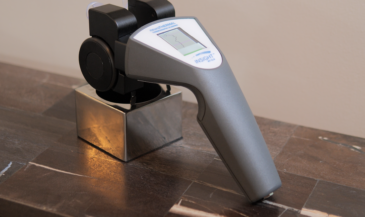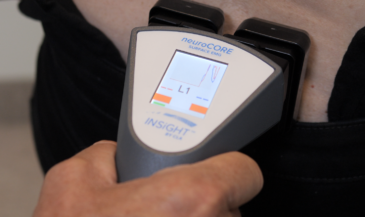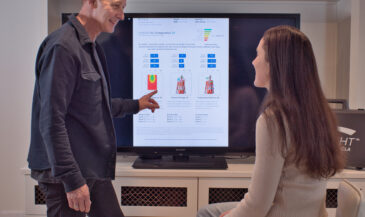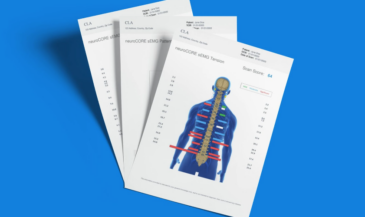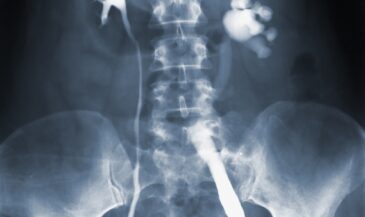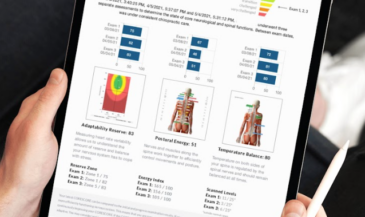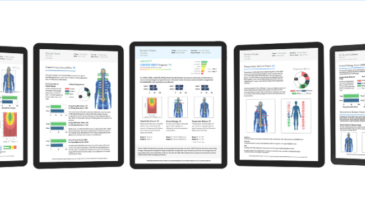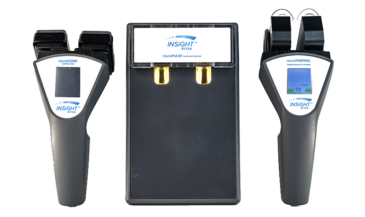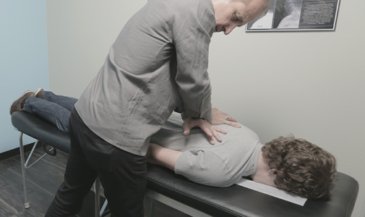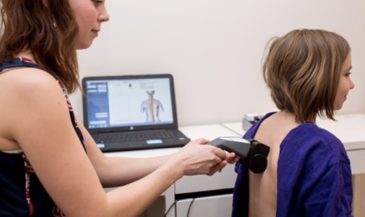Imagine having the ability to see exactly how the nervous system is functioning—beyond what symptoms tell you. That’s what neurological scanning offers. It’s not just another tech trend; it’s a game-changer for understanding the root causes of stress, dysfunction, and suboptimal health.
This article explores the ins and outs of neurological scanning—what it is, why it matters, and how it’s transforming chiropractic and holistic care. If you’re ready to unlock a deeper level of insight into health and performance, let’s get into it.
What is Neurological Scanning?
Neurological scanning refers to non-invasive instruments and techniques used to measure how the nervous system is functioning. These scans assess everything from nerve conduction and muscle activity to adaptability and stress response. The goal is simple: to identify areas of stress, dysfunction, or imbalance that could be affecting overall health.
The most common tools in neurological scanning include:
- Surface EMG scans to track electrical signals in muscles.
- Thermal scans to identify temperature changes that point to nerve interference.
- HRV (Heart Rate Variability) scans to evaluate the balance of the autonomic nervous system.
This isn’t just about finding problems; it’s about understanding how the body is adapting to its environment and guiding care to improve nervous system function.
Why Neurological Scanning is Important
The nervous system controls everything in the body—from movement and organ function to stress recovery and immunity. When the system is under strain, it shows up as more than just pain. It can manifest as fatigue, poor sleep, or even chronic illnesses.
Here’s why neurological scanning is a must-have:
- It identifies hidden stress and dysfunction before symptoms appear.
- It tracks the progress of care, so you’re not guessing about what’s working.
- It focuses on the root causes of issues, not just short-term relief.
Instruments Used in Neurological Scanning
Surface EMG Scans
Surface EMG scans measure the electrical activity in muscles. This data shows where the body is compensating for poor nerve communication or dealing with chronic tension.
Key insights from EMG scans:
- Muscle patterns that reveal stress or exhaustion.
- Areas where the body is overcompensating due to subluxations.
- Progress in reducing nerve interference after chiropractic adjustments.
Thermal Scans
Thermal imaging tracks temperature changes along the spine, which can reveal areas of inflammation or nerve interference affecting organs and glands.
What thermal scans reveal:
- Hot spots where stress is affecting nerve function.
- Adaptability in the autonomic nervous system.
- Patterns of improvement after care.
HRV Scans
Heart Rate Variability (HRV) scans measure how well the autonomic nervous system balances between stress (sympathetic) and recovery (parasympathetic).
Why HRV matters:
- Shows how well a patient is adapting to daily stress.
- Tracks resilience and recovery over time.
- Offers insights into chronic stress and its impact on health.
How Neurological Scanning Transforms Chiropractic Care
For chiropractors, neurological scanning is like having a roadmap for patient care. It goes beyond the traditional focus on pain and misalignment to show how well the nervous system is functioning.
This approach allows chiropractors to:
- Pinpoint areas of nerve interference and dysfunction.
- Create care plans based on measurable data.
- Track and communicate progress with patients more effectively.
Patients love it too. They can see exactly how their care is working, which builds trust and keeps them coming back.
Why Neurological Scanning Goes Beyond Traditional X-Rays
Let’s talk about X-rays for a second. They’re great for showing structure, but they don’t tell you anything about function. Neurological scanning, on the other hand, gives you real-time data on how the body is performing.
- X-rays show bones.
- Neurological scans show how the nerves, muscles, and body systems are working together.
The result? A clearer picture of health and a better understanding of what needs to be addressed.
How INSiGHT Scanning Enhances Chiropractic Care
For chiropractors, neurological scanning is the ultimate tool for guiding care. It gives you data on how well the nervous system is performing, helping you make adjustments that go beyond pain relief.
Here’s what it does for your practice:
- Precision: You’ll know exactly where to focus your care.
- Accountability: Patients see measurable results, building trust.
- Efficiency: Scans streamline care plans and track progress.
When patients understand how their nervous system is improving, they’re more likely to stay engaged and committed to their care.
Neurological Scanning for Pediatric Patients
Kids don’t always show obvious signs of stress or subluxations, but that doesn’t mean their nervous system is firing perfectly. Neurological scans are perfect for pediatric care because they’re quick, non-invasive, and provide clear insights into developmental challenges.
What makes it great for kids:
- Tracks neurological development and resilience.
- Identifies stressors that could lead to long-term issues.
- Gives parents peace of mind with measurable data.
From colic to immune challenges, neurological scanning can catch and correct problems early.
How Neurological Scanning Improves Patient Engagement
Let’s be honest. Patients want to see progress. They don’t just want to hear that things are getting better—they want proof.
That’s where neurological scanning shines:
- Visual reports make it easy to explain what’s going on.
- Patients can see their improvement in real time.
- It builds trust and keeps patients committed to their care plan.
When patients see measurable results, they stay motivated and keep coming back.
The Three Tools Inside CLA’s INSiGHT neuroTECH Scanning Suite
Here’s where it gets exciting. The INSiGHT neuroTECH is a scanning technology suite that packs a three-tool punch to give you all the info you need.
- neuroPULSE (HRV): Tracks how well the autonomic nervous system balances stress and recovery. You’ll see whether a patient is thriving or just barely keeping it together.
- neuroCORE (EMG): Measures the electrical activity in muscles, pinpointing tension and exhaustion. If your patient’s muscles are working overtime just to stay upright, this scan shows it.
- neuroTHERMAL: Maps out temperature changes along the spine, which can reveal inflammation and deeper nerve issues.
Each tool tells a story, and together, they give you the full picture. No guesswork. Just scientific, reproducible data.
How to Use Neurological Scans to Improve Patient Outcomes
The key to getting the most out of neurological scanning is consistency. Use it as part of your standard care workflow to:
- Establish a baseline: Scan every new patient to see where they’re starting from.
- Guide care plans: Use the data to customize adjustments.
- Track progress: Run follow-up scans to show how care is improving their nervous system function.
When patients can see their results in real time, they’re more likely to stay engaged and committed to their care.
Why INSiGHT Scanning Technology Is a Game-Changer
The INSiGHT neuroTECH doesn’t just make your care better—it makes it smarter. You’re no longer guessing or relying on symptoms alone. Instead, you’re showing patients exactly what’s happening inside their body and how your care is making a difference.
Key benefits of using INSiGHT:
- CORESCORE reports: A single score that tracks neurological health over time.
- Measurable results: Patients see how their care is improving their nervous system.
- Better retention: When patients trust the process, they stick to their care plans.
This isn’t just about technology. It’s about transforming how you deliver care and grow your practice.
How to Implement Neurological Scanning in Your Practice
If you’re ready to bring neurological scanning into your practice, here’s how to get started:
- Invest in the right tools: Look for systems like INSiGHT Scanning Technology, which combines EMG, thermal, and HRV scans.
- Train your team: Make sure everyone knows how to use the tools and explain the results.
- Start with every patient: Make scans a standard part of your workflow.
- Communicate effectively: Use reports to show patients their progress and the value of ongoing care.
Book a call with an INSiGHT Advisor today to learn how you can bring this transformative technology into your chiropractic clinic so you can lead your patients on a journey toward optimal health and wellness.
FAQs About Neurological Scanning
Is neurological scanning safe for all ages?
Yes, it’s non-invasive and suitable for patients of all ages, from newborns to seniors.
How long do scans take?
Most scans are quick, taking just a few minutes to complete.
Can patients understand the results?
Absolutely. Reports and visuals make it easy to explain what the scans reveal and why care is needed.









